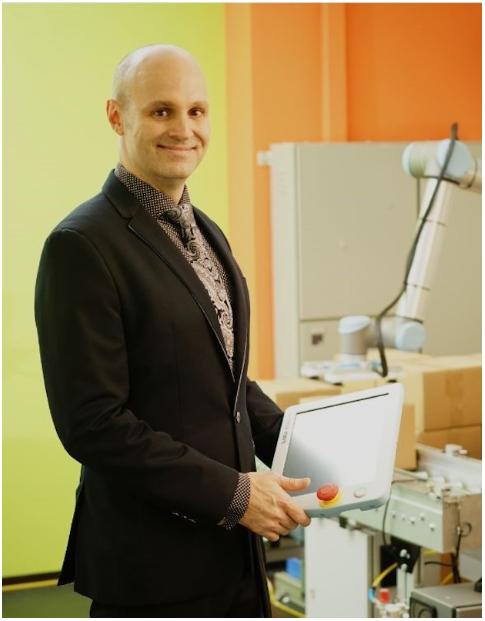Smart machines should complement human skills and unleash synergistic benefits in terms of quality, efficiency and even ergonomics. Though Organizations must identify about how Cobots and Man-Machine synergy differ in workload process.

The invasion of smart machinery is witnessed across many different factories and functions. As advancements in automation steal the limelight, people will be concerned about the future of work, but at the same time, industrialization has created new jobs for factories.
Now, collaborative robots (cobots) are making great leaps, conquering new job creation fields by fueling the growing need for skilled labour in the robot industry. The explosive growth in the robot industry has accelerated the demand for skilled people, challenging many robotic companies in their recruitment efforts.
Relieving humans of tedium
The maturity of a business is not a significant factor to determine whether a business is ready to bring in cobots since the latter are easy to use and to set up. Typically, when humans are involved in either dirty, dull, or dangerous activities, that is the time to search for an option to fill the gap. Business owners should help humans to work with high-level evaluative tasks and remove them from dangerous duties.
For instance, a simple pick-and-place task can be performed by either humans or cobots. The task can be very dull and repetitive for humans but there will be an upshift in the output when cobots are involved. Cobots relieve humans from strenuous and repetitive tasks so that the latter can take on better roles within the business.
One company that relies heavily on the ability to free human labor from dull and dirty tasks is Hyundae Induction Hardening Heat Treatment (HIHHT) in Korea. After deploying two robots, the company saw failure rate decrease from 0.03% to 0.01% and production efficiency increase by 31%. This boost has allowed small and medium-sized enterprises with limited resources to control production cost, increase product quality, and in the case of HIHHT, even afford to hire two more employees!
Cobots or automation?
There are extreme conditions that cobots are not particularly designed for, and there may be limitations in some type of automation equipment. However, the majority of the markets have utilized cobots now. In fact, Universal Robots has sold more than 46,000 cobots that are used in several thousand production environments.
In the current 4th Industrial Revolution, business owners are adopting the latest technologies involving ‘man-machine’ collaborations for a new era of super-productivity.
Humans are sharing their workload with cobots in an effort to boost productivity and efficiency, while business owners are implementing collaborative automation to promote the democratization of technology.
Do cobots really create new jobs?
The major focus of Universal Robots is to keep humans involved throughout any application development. Cobots are designed to work alongside humans whereas traditional robots are designed to work specifically behind cages.
Even with AI and modern vision systems, robots are not as intuitive as humans. The fact is that cobots make use of the cognitive ability of humans which provides a higher efficiency rate as compared to when robots and humans work singularly. Human talent remains significant and human labor will not be replaced by cobots.
Business owners consider both the feasibility of the application and the return on investment to determine if the application makes sense from a business perspective. Cobots provides the financial benefit that offsets the cost of setting up the application. Placing cobots alongside humans increases productivity and efficiency which allows businesses to see a fast return of investment. Eventually, business owners find themselves in a position to hire more human workers.
The man-machine collaboration is paving the way for unparalleled productivity enhancement across industries, ranging from automotive to even healthcare. The role of machines is shifting from replacing humans to complementing human skills and opening doors to a multitude of benefits in terms of quality, efficiency and even ergonomics.
